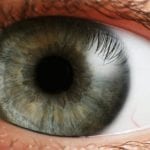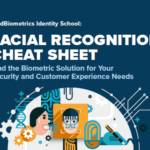A team of researchers from Japan’s Kyushu University have come up with a novel form of biometric authentication. The team’s technique creates a biometric profile based on the chemical compounds in someone’s breath, and can compare a new breath sample to that template to produce a biometric match.

According to the researchers, their olfactory sensors can verify someone’s identity with 97 percent accuracy, though it is worth noting that those results were achieved with a relatively small test pool of 20 subjects. The researchers have also not fully accounted for other particles (such as food) that may be in someone’s mouth during a test. The subjects were told to fast for six hours before their breath prints were registered.
Having said that, the researchers believe that their technique is solid, and that adding more sensors to their olfactory array will give them the ability to distinguish someone’s breath from food particles that might interfere with a scan. They also noted that their sample size, though limited, still featured people of different ages, sexes, and ethnicities, and that the results were consistent across demographic groups.
The olfactory sensor array that was used for the trial features 16 different channels, each of which covers a select range of chemical compounds. The researchers look at 28 compounds that are found in human breath when performing a biometric match.
While the concept may seem strange, the researchers noted that breath analysis is not necessarily a new science, and that the technology has been used as a diagnostic tool for diseases like cancer and diabetes. It has also been used to detect alcohol in breathalyzer examinations.
The results of the Kyushu study were published in the most recent issue of the Chemical Communications journal. The researchers believe that their technique has advantages over more traditional modalities like face and fingerprint recognition because physical characteristics can be copied or spoofed, and because someone’s physical features can change over time. Breath analysis, on the other hand, essentially identifies someone based on their chemical composition using a gaseous (and more amorphous) input.
The study was a collaboration between Kyushu University’s Institute for Materials Chemistry and Engineering and Tokyo University. Some breathalyzer devices use biometric authentication to verify their subjects, but the biometric check typically relies on face or fingerprint analysis and is distinct from the breathalyzer portion of the process.
Source: Newsweek
–
June 29, 2022 – by Eric Weiss








Follow Us